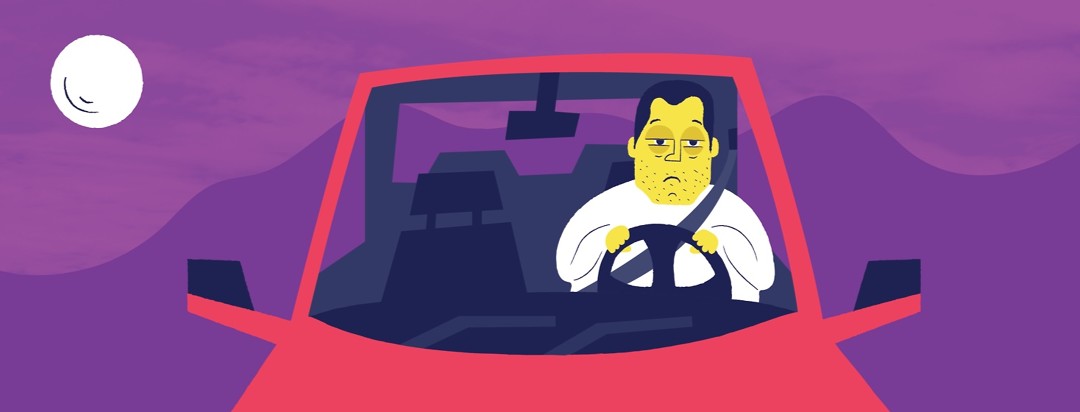Narcoleptic Nap Guide: Drowsy Driving Edition Part 1
Have you ever experienced the following while behind the wheel of a car:
- A rapid, overwhelming sensation of heaviness weighing down the lids of your eyes while attempting to drive?
- A sudden watering of the eyes accompanied by unbearable itchiness as your eyes uncontrollably flutter, fighting to stay open?
Or maybe you've found yourself nodding away while at the wheel of the car, despite feeling rested prior to driving.
Reducing risks on the road
Whether it’s unknowingly dozing off or experiencing paralysis as a result of a cataplectic attack, driving poses itself to be a never-ending battle for those living with narcolepsy. There are potential but serious safety risks concerning those choosing to drive when living with a sleeping disorder.
So what does one do to assure safety while on the road during a sleep attack?
- Do a self-assessment: Ask yourself, where do you stand on your sleepiness scale?
- Plan breaks in set time increments, setting an alarm on your phone.
- Pull over and park for a quick power nap or an opportunity to get up and stretch.
- If you have a passenger who is able to drive, explain to them the circumstances so they are aware of telltale signs indicating you are in no condition to drive (swap roles).
- When in doubt, DON'T DRIVE – utilize public forms of transportation or companies like Uber.
Signs it might be time for a nap
- Trouble maintaining focus
- Trouble recollecting the time that had already passed while in the car
- Struggling and unable to stay within your lane
- Heavy eyelids and eyes watering
- Frequent need to blink
- Urge to constantly rub eyes
- Frequent need to backtrack as a result of missing given directions or exits
Know your local laws
If you didn’t know, in many places, you can and will get ticketed if found sleeping in your car while:
- Keys are in the ignition
- Parked on properties owned by the city
- Parked on private property, roadways, and places with parking time limits violating parking laws
Here are 6 legal parking options when feeling sleepy on the road:
- Walmart
- Casinos
- Rest stops
- Public campgrounds
- Welcome Info Centers
- Grocery store, fast food, drug store, and mall parking lots
Tips to avoid a hazy run-in with the law
Have a conversation with your doctor requesting a signed medical note (kept in the car) explaining what narcolepsy is and to medically justify the necessities of such actions.
If you don’t have a medical bracelet/necklace/card yet, do yourself a favor and go get yourself one. This is a critical tool when living with a chronic illness.
According to the American Academy of Sleep Medicine and National Safety Council:1,2
- Over 300,000 car crashes annually involve the act of driving while drowsy.
- Around 100,000 of those accidents involve injury.
- Of all fatal crashes that occur, 21 percent are a result of drowsy driving which equates to roughly 6,000 cases each year.
- When feeling sleep deprived, you are 3 times more likely to be involved in a car crash.
- Around 66 percent of Americans who admitted to drowsy driving were between the ages of 19 to 29 years old.
Check out part 2 of this series where I talk about safety when napping in your car and what to pack for sleeping comfortably!

Join the conversation